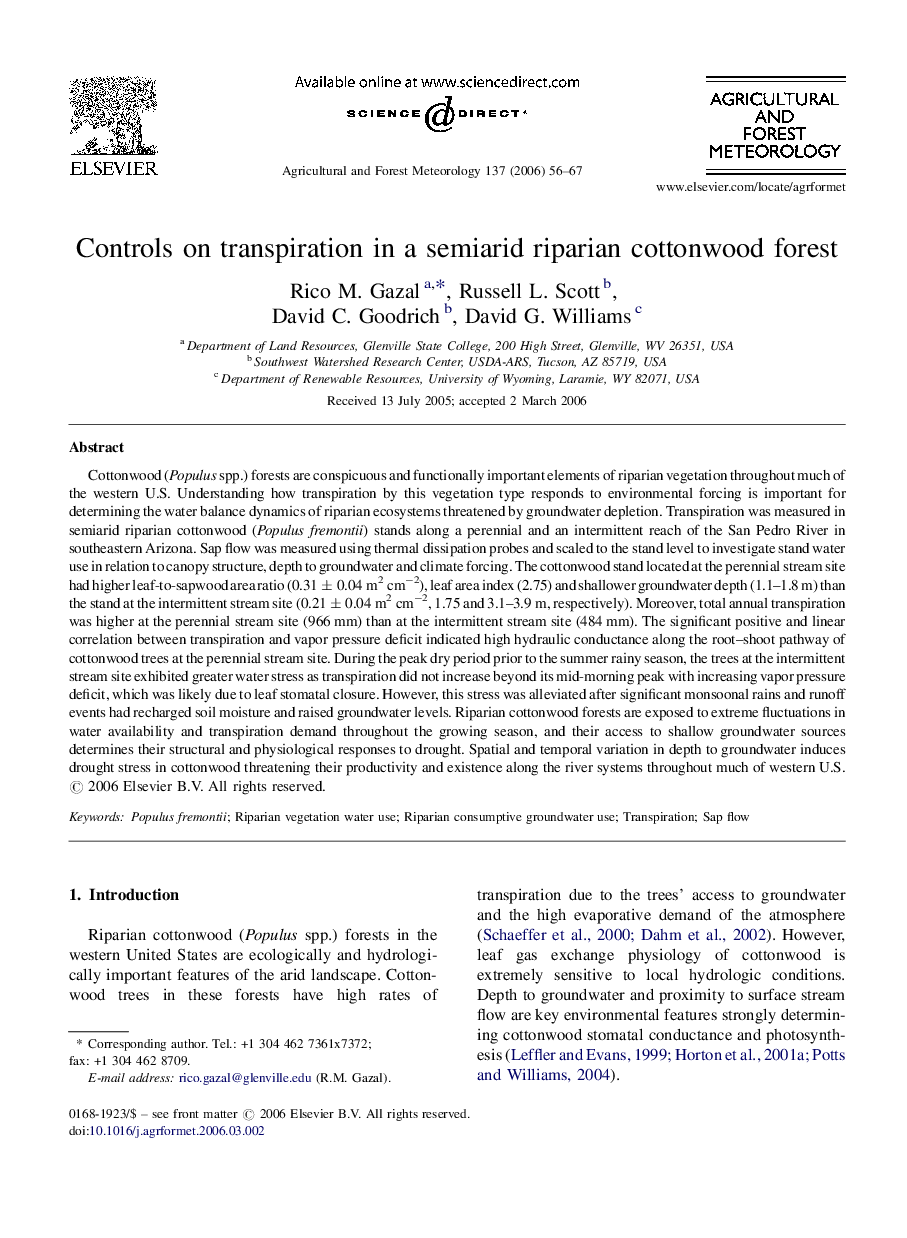| کد مقاله | کد نشریه | سال انتشار | مقاله انگلیسی | نسخه تمام متن |
|---|---|---|---|---|
| 83054 | 158441 | 2006 | 12 صفحه PDF | دانلود رایگان |

Cottonwood (Populus spp.) forests are conspicuous and functionally important elements of riparian vegetation throughout much of the western U.S. Understanding how transpiration by this vegetation type responds to environmental forcing is important for determining the water balance dynamics of riparian ecosystems threatened by groundwater depletion. Transpiration was measured in semiarid riparian cottonwood (Populus fremontii) stands along a perennial and an intermittent reach of the San Pedro River in southeastern Arizona. Sap flow was measured using thermal dissipation probes and scaled to the stand level to investigate stand water use in relation to canopy structure, depth to groundwater and climate forcing. The cottonwood stand located at the perennial stream site had higher leaf-to-sapwood area ratio (0.31 ± 0.04 m2 cm−2), leaf area index (2.75) and shallower groundwater depth (1.1–1.8 m) than the stand at the intermittent stream site (0.21 ± 0.04 m2 cm−2, 1.75 and 3.1–3.9 m, respectively). Moreover, total annual transpiration was higher at the perennial stream site (966 mm) than at the intermittent stream site (484 mm). The significant positive and linear correlation between transpiration and vapor pressure deficit indicated high hydraulic conductance along the root–shoot pathway of cottonwood trees at the perennial stream site. During the peak dry period prior to the summer rainy season, the trees at the intermittent stream site exhibited greater water stress as transpiration did not increase beyond its mid-morning peak with increasing vapor pressure deficit, which was likely due to leaf stomatal closure. However, this stress was alleviated after significant monsoonal rains and runoff events had recharged soil moisture and raised groundwater levels. Riparian cottonwood forests are exposed to extreme fluctuations in water availability and transpiration demand throughout the growing season, and their access to shallow groundwater sources determines their structural and physiological responses to drought. Spatial and temporal variation in depth to groundwater induces drought stress in cottonwood threatening their productivity and existence along the river systems throughout much of western U.S.
Journal: Agricultural and Forest Meteorology - Volume 137, Issues 1–2, 1 March 2006, Pages 56–67